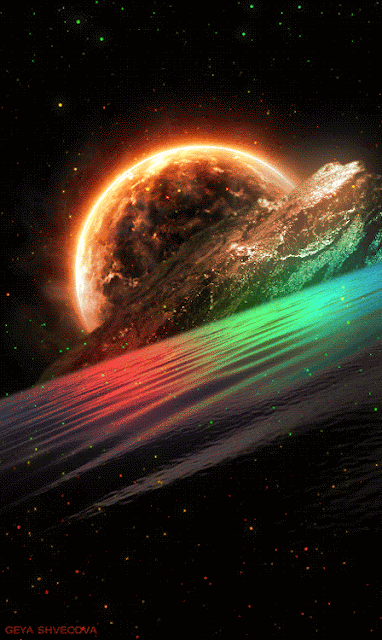Black hole.
What is a black hole?
The term "black hole,, was first used by "John Wheeler,, in 1967 ,the word itself is very suggestive and interesting. it was unthinkable and unbelievable in the 20th century but just a few years ago, it officially came to pass. his discovery and research have been greatly influenced by " Stephen Hawking,, who was even called a black hole hunter.
A black hole is a place in the cosmos where gravity is so strong that nothing can escape from it also light. strong gravitation arose because the material is placed in small space, such compression occurs at the end of the star. some came just after the death of the stars, black holes are invisible because they absorb light. however they can be viewed through special tools. the black holes are in different size. the mass and size of the black hole determine what it looks like.NASA studies black holes with spaceships as the Chandra X-ray observatory, the satellite "swift,, and the "farm,, gamma ray-space telescope.
How big is a black hole?
the smallest black hole can be one atom in size but has an adult mountain mass. Medium-sized holes are called stellar holes. the mass of the stellar hole is about twenty solar amasses. but 16 km diameter ball can fall inside free. there are plenty of back holes in our galaxy. the largest black holes are called super-massive. their mass exceeds 1 million solar masses and its size is like a ball with the diameter of a sun.
How did the black hole originate?
It is believed that the primary black hole in the ancient time originated soon after the big bang. A stellar hole is formed even when a very big massive star destroys itself, it will also produce a supernova " exploded star,, which spares its parts in the cosmos. scientists believe that super-massive black holes originated at the time the galaxies in which they fall.
How do scientists know that a black hole really exists?
As we said, we can't see a black hole because it absorbs light, the ordinary human eye will not notice it ,but scientists can see the effects of its gravity on stars and gases around it. if the star moves in orbit around a central point in space, scientists observe and study them if they move around the black hole. when black hole and stars rotate around one another, there is so much gravitation that scientific instruments can see them. the black hole's gravity can sometimes be so strong that it can attract the outer layers of the star to itself. and it grows a disk called an " accretion disk,, . the gases from the accretion disk spirals into black hole, heats up at high temperatures and emits X-ray radiocarbon all distinctions. NASA'S telescopes are easy to measure. astronomers use this information to better understand characteristic of black holes.
Can a black hole destroy the Earth?
black holes are not walk into space and do not swallow random objects, like other space objects, they are subject to gravity. if black hole wants to destroy our earth it must be close enough to the solar system, that is less than expected. it there was a black hole with the same mass on place of sun the earth would not fall into it, because it wold have same gravity as the sun and every planet would turn just as it is now.
Can the sun turn into black hole?
The mass of the sun is not enough to turn into a black hole, billions of years later at the end of our solar life the sun will become a red giant star.when the sun runs out of fuel, it will exists its outer layers into the cosmos and produces a dazzling ring of gas called the "planetary nebula,, some scientists also predict that sun will one day turn into giant crystal ball.
The end of black hole
during evaporation , the black hole emits energy in the form of the positive particles that escape. the more massive the black hole, the most energy would be released. Over time, the black hole would eventually lose so much mass that it would become small and unstable. this is the dramatic end.
The end of black hole
during evaporation , the black hole emits energy in the form of the positive particles that escape. the more massive the black hole, the most energy would be released. Over time, the black hole would eventually lose so much mass that it would become small and unstable. this is the dramatic end.



Comments
Post a Comment